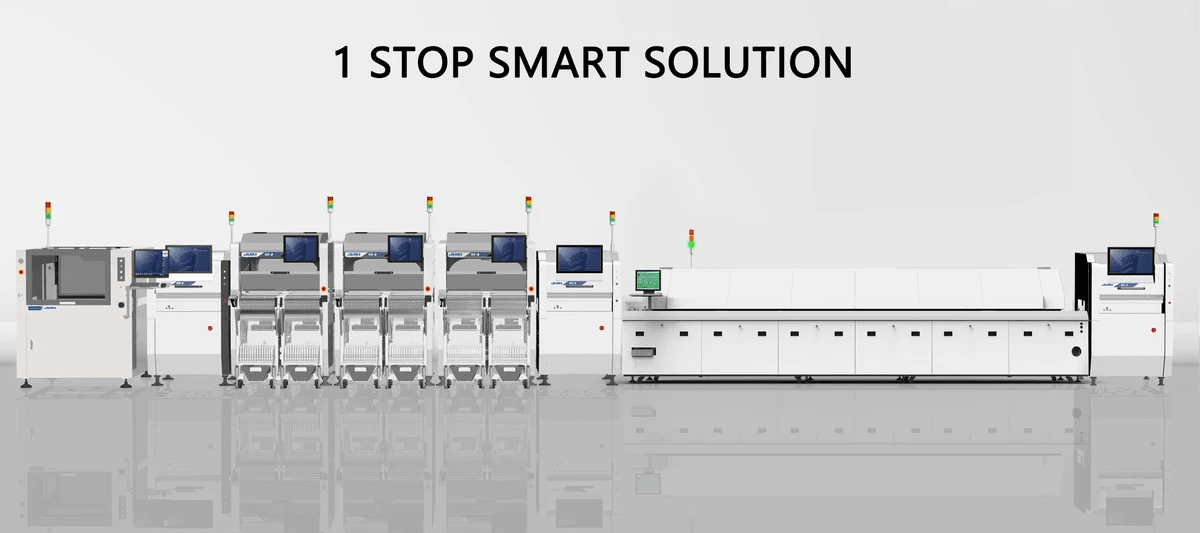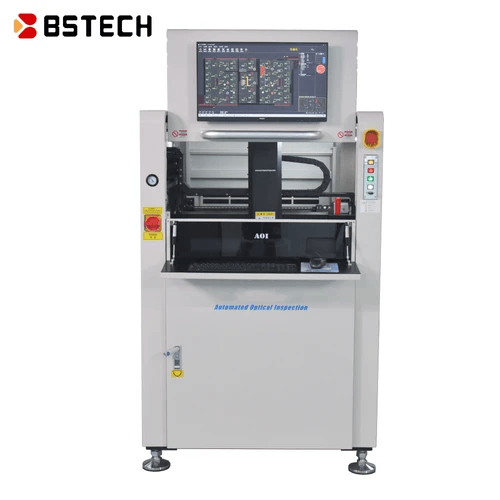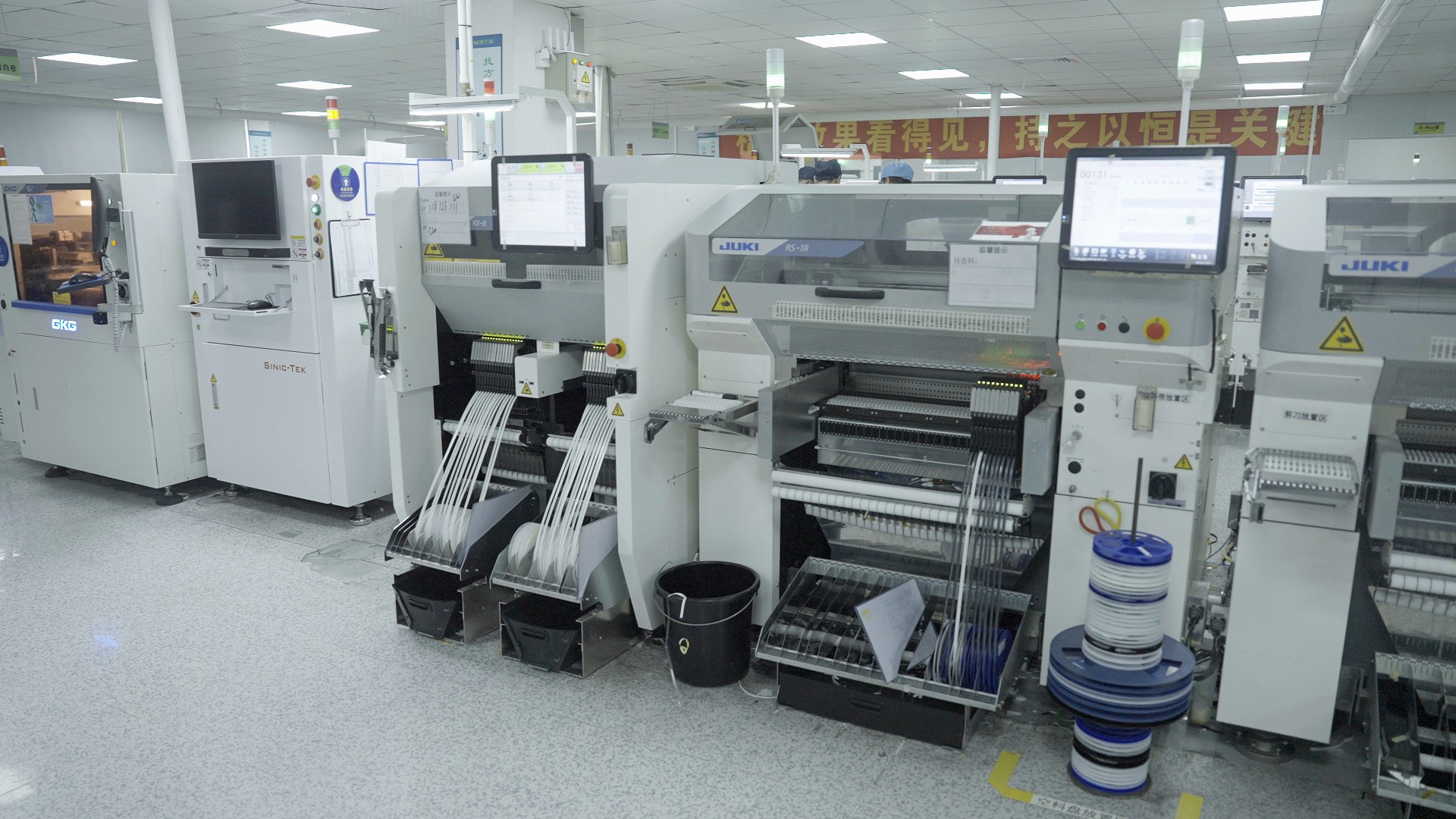Introduction

In the fast-paced world of electronics manufacturing, maintaining high quality is paramount, and this is where inspection technologies like AOI and SPI come into play. Automated Optical Inspection (AOI) in SMT assembly ensures that components are placed correctly on printed circuit boards (PCBs), while Solder Paste Inspection (SPI) checks the quality of solder paste before it reaches the reflow machine. Understanding these two vital processes not only enhances production efficiency but also significantly reduces defects, making them essential for any manufacturer utilizing SMT machines.
Understanding AOI in SMT Assembly
Automated Optical Inspection (AOI) is a critical technology used in surface mount technology (SMT) assembly to ensure that components are accurately placed on PCBs. By employing high-resolution cameras and sophisticated algorithms, AOI systems can quickly identify misalignments, missing components, or other defects that could compromise product quality. This real-time feedback allows manufacturers to address issues immediately, leading to higher yields and reduced waste in the overall production process.
The Role of SPI in Solder Process
Solder Paste Inspection (SPI) serves as an essential checkpoint in the soldering process prior to reflow soldering. It evaluates the amount and placement of solder paste applied to PCB pads, ensuring optimal conditions for effective solder joint formation during reflow operations. Without proper SPI measures in place, defects such as insufficient or excessive solder can occur, leading to potential failures down the line.
Comparing AOI and SPI Technologies
While both AOI and SPI technologies serve crucial roles within SMT processes, they focus on different stages of production. AOI primarily inspects finished assemblies for placement accuracy after components have been mounted onto PCBs, while SPI assesses the quality of solder paste application before it goes through the reflow machine. By comparing these two methodologies, manufacturers can better understand how each contributes uniquely to enhancing product reliability and overall quality control.
What is AOI in SMT?

Automated Optical Inspection (AOI) is a critical component in Surface Mount Technology (SMT) that enhances the quality control process. It employs advanced imaging technology to detect defects on printed circuit boards (PCBs) after assembly but before reflow soldering. By ensuring that components are correctly placed and solder paste is adequately applied, AOI helps maintain high standards in electronic manufacturing.
Definition and Functionality
AOI in SMT refers to the automated process of inspecting assembled PCBs using high-resolution cameras and sophisticated software algorithms. The system captures images of the boards and compares them against predefined templates or models to identify discrepancies such as misaligned components or insufficient solder paste application. This functionality allows for rapid detection of errors, facilitating immediate corrective actions before the boards undergo reflow soldering.
Key Benefits of AOI
The key benefits of AOI are numerous and impactful for manufacturers using SMT machines. First, it significantly reduces the risk of defects reaching customers, leading to improved product reliability and customer satisfaction. Additionally, AOI enhances overall production efficiency by minimizing rework costs associated with faulty assemblies; thus, manufacturers can achieve a better return on investment while maintaining high-quality standards.
Integration with SMT Machines
Integrating AOI systems with other SMT machines creates a seamless workflow that boosts productivity and quality control throughout the assembly process. These systems can be positioned at various stages—typically after placement but before reflow—ensuring that any issues are addressed promptly without delaying production timelines. Moreover, modern machine smt setups often allow for real-time data sharing between AOI systems and other equipment like reflow machines, enabling continuous improvement based on inspection results.
What is SPI in SMT?

Solder Paste Inspection (SPI) is a critical component in the surface mount technology (SMT) assembly process. It ensures that the right amount of solder paste is applied to the PCB before components are placed and subsequently reflow soldered. By catching potential issues early, SPI helps maintain high-quality standards and reduces defects during assembly.
Definition and Purpose
At its core, SPI serves to evaluate the application of solder paste on printed circuit boards (PCBs). This inspection technology uses advanced imaging techniques to measure various parameters such as volume, area, and height of the solder paste deposits. The primary purpose of SPI is to ensure that each pad receives the correct amount of solder paste, which is crucial for effective reflow soldering and overall reliability of the finished product.
Importance of Solder Paste Inspection
Solder paste inspection plays a pivotal role in SMT processes because improper application can lead to significant defects during assembly. Insufficient or excessive solder can cause cold joints or bridging between pads, resulting in malfunctioning electronics. By implementing robust SPI systems within SMT machines, manufacturers can drastically reduce rework costs and enhance the reliability of their products.
How SPI Works with Reflow Machines
SPI systems are designed to seamlessly integrate with reflow machines within an SMT line. After applying solder paste onto PCBs, these machines conduct real-time inspections before components are placed for reflow soldering. The data collected from SPI allows operators to adjust parameters on their SMT machines proactively, ensuring optimal conditions for subsequent processes like placement and reflow.
The Process Flow: AOI vs SPI
In the world of surface mount technology (SMT), understanding the differences in process flow between Automated Optical Inspection (AOI) and Solder Paste Inspection (SPI) is essential for manufacturers aiming to optimize quality control. While both technologies play critical roles in ensuring the integrity of electronic assemblies, they operate at different stages of the production line and focus on distinct aspects of quality assurance. By dissecting their workflows, we can better appreciate how each contributes to a seamless assembly process.
Overview of Workflow Differences
The workflow for AOI in SMT typically occurs after components have been placed on the printed circuit board (PCB) but before reflow soldering takes place. This stage allows for immediate detection of misaligned or missing components, ensuring that any errors are caught early in the assembly process. Conversely, SPI is implemented prior to reflow soldering and focuses specifically on assessing the quality of solder paste application, confirming that there is adequate paste volume and proper placement on each pad.
While AOI utilizes advanced imaging technologies to capture high-resolution images of assembled boards, SPI employs specialized sensors to evaluate solder paste deposits directly before they undergo heating in a reflow machine. This distinction highlights how these two inspection methods complement each other; AOI inspects completed assemblies while SPI ensures that the foundation—solder paste—is laid correctly for successful reflow soldering. Thus, integrating both inspection types into SMT machines enhances overall efficiency and product reliability.
Timing and Placement in Assembly
Timing plays a pivotal role in determining when each inspection method is applied within the assembly process. In an ideal scenario, SPI should occur immediately following the application of solder paste by stencil printing machines but before any components are placed onto the PCB. This strategic timing allows manufacturers to rectify any issues with solder paste application before moving forward with component placement—ultimately leading to fewer defects during reflow soldering.
On the other hand, AOI comes into play after all components have been mounted onto the PCB but prior to passing through a reflow machine. The timing here ensures that any misalignments or defects are caught before critical processes take place that could render those errors irreversible. By synchronizing these inspections within their respective timelines, manufacturers can maintain optimal production flow while minimizing risks associated with faulty assemblies.
Impact on Quality Control
The impact of integrating both AOI and SPI into SMT processes cannot be overstated when it comes to enhancing quality control measures across manufacturing lines. By implementing effective solder paste inspection techniques via SPI early on, potential issues can be addressed before they escalate into larger problems during reflow soldering—a crucial step where mistakes can become costly if not identified promptly.
Similarly, employing robust AOI systems post-assembly ensures that every board leaving production meets stringent quality standards by identifying defects related to component placement or orientation quickly and efficiently. When utilized together within machine SMT systems, these technologies create a comprehensive safety net designed to catch common pitfalls associated with surface mount assembly processes—ultimately leading to higher yields and customer satisfaction.
Real-World Applications of AOI and SPI

In the fast-paced world of electronics manufacturing, both Automated Optical Inspection (AOI) and Solder Paste Inspection (SPI) play crucial roles in ensuring product quality. These technologies are not just buzzwords; they are essential tools that enhance the reliability and efficiency of surface mount technology (SMT) processes. By integrating AOI and SPI into their workflows, manufacturers can significantly reduce defects, streamline production, and ultimately deliver superior products to their customers.
Industries Benefiting from AOI and SPI
Several industries stand to gain immensely from implementing AOI in SMT processes alongside solder paste inspection technologies. The consumer electronics sector is a prime example, where precision is paramount in devices ranging from smartphones to laptops. Similarly, automotive manufacturing relies heavily on these inspection technologies to ensure that components meet stringent safety standards before they hit the assembly line.
Medical device manufacturers also reap the benefits of AOI and SPI by ensuring that critical components are flawlessly assembled. In aerospace, where even minor defects can lead to catastrophic failures, the integration of these inspection systems helps maintain rigorous quality control standards. Overall, any industry that relies on SMT machines for assembly can leverage AOI and SPI to enhance product reliability while minimizing costly recalls or rework.
Case Studies: Bensun Technology
Bensun Technology has made significant strides in optimizing its production lines through the strategic use of AOI and solder paste inspection systems. In one case study involving a high-volume consumer electronics manufacturer, Bensun implemented an advanced AOI system that reduced defect rates by over 30%. This dramatic improvement not only enhanced product quality but also led to substantial cost savings by reducing waste during the manufacturing process.
Another notable case involved a medical device client who faced challenges with inconsistent solder paste application on delicate components. By incorporating SPI into their reflow soldering process, Bensun was able to identify issues early on, significantly improving yield rates while ensuring compliance with industry regulations. These success stories illustrate how effective integration of inspection technologies can transform production capabilities across various sectors.
Trends in SMT Machines and Inspection
The landscape of SMT machines is evolving rapidly as manufacturers seek innovative ways to improve efficiency and accuracy in assembly processes. One prominent trend is the increasing integration of AI-driven analytics within both AOI and SPI systems, enabling real-time data analysis for more informed decision-making during production runs. This shift towards smart manufacturing allows companies to predict potential defects before they occur—essentially making them proactive rather than reactive.
Moreover, advancements in machine vision technology are enhancing the capabilities of surface mount machines by providing higher resolution images for more accurate inspections during both solder paste application and after component placement with AOI systems. As manufacturers continue to adopt these cutting-edge solutions, we can expect even greater improvements in quality control measures across various industries reliant on SMT processes.
Choosing Between AOI and SPI
When it comes to selecting between AOI (Automated Optical Inspection) and SPI (Solder Paste Inspection) in the context of SMT (Surface Mount Technology), manufacturers face a critical decision that can impact their production quality and efficiency. Both technologies serve unique purposes within the assembly process, but understanding their specific roles is essential for making an informed choice. Factors such as production volume, product complexity, and integration with existing SMT machines should all be taken into consideration.
Factors to Consider in Selection
One of the primary factors to consider when choosing between AOI and SPI is the stage of production at which each technology operates. AOI is typically employed after components are placed on a PCB, while SPI focuses specifically on assessing solder paste application before reflow soldering takes place. Additionally, manufacturers should evaluate their specific needs for defect detection; AOI excels at identifying placement issues, while SPI is crucial for ensuring optimal solder paste quality.
Another important consideration is the compatibility of these technologies with existing machine setups. If your surface mount machine already incorporates advanced inspection capabilities, adding either AOI or SPI could enhance your overall workflow without requiring extensive modifications. Moreover, factors like ease of integration with reflow machines and other SMT equipment can significantly influence your decision-making process.
Lastly, it's essential to assess the learning curve associated with each technology. While both AOI and SPI systems have become increasingly user-friendly over time, some may still require specialized training for optimal operation within machine SMT environments. Ensuring that your team is equipped to handle these systems effectively will ultimately contribute to smoother operations.
Cost-Benefit Analysis for Manufacturers
Conducting a cost-benefit analysis when choosing between AOI and SPI can provide valuable insights into which technology aligns best with your manufacturing goals. While initially investing in either system may seem daunting due to upfront costs associated with high-quality equipment, it's crucial to weigh these expenses against potential savings from reduced defects and improved yield rates in production runs.
AOI systems often come with higher price tags than basic solder paste inspection tools; however, they provide comprehensive defect detection that can lead to significant cost savings down the line by minimizing rework or scrap rates associated with faulty assemblies. On the other hand, implementing SPI primarily targets early-stage quality control by ensuring proper solder paste application—this proactive approach can also yield substantial long-term benefits by preventing costly errors during later stages of assembly.
Ultimately, understanding how each technology impacts overall productivity will help manufacturers make sound financial decisions regarding their investment in inspection systems tailored for their specific needs within SMT processes.
Future-Proofing Your SMT Processes
Future-proofing your SMT processes involves anticipating technological advancements and ensuring that your chosen inspection method remains relevant as industry standards evolve over time. Both AOI and SPI technologies continue to advance rapidly; therefore, selecting solutions that offer scalability or adaptability will be beneficial as demands change within various sectors utilizing surface mount machines.
Investing in flexible inspection systems capable of integrating new features or updates means manufacturers won't need frequent replacements or extensive retrofits when upgrading equipment—saving both time and money in the long run! Furthermore, keeping an eye on trends such as AI-driven inspections or enhanced data analytics capabilities will ensure that businesses remain competitive while maintaining high-quality output through effective reflow soldering practices.
In conclusion, whether you choose AOI smt or solder paste inspection largely depends on understanding how each technology aligns with current manufacturing requirements while being mindful of future developments in this ever-evolving field.
Conclusion
In the ever-evolving landscape of SMT assembly, understanding the roles of AOI (Automated Optical Inspection) and SPI (Solder Paste Inspection) is crucial for manufacturers aiming to enhance quality control and efficiency. Both technologies serve distinct yet complementary purposes in the production process, ensuring that every component is accurately placed and soldered. By leveraging both AOI and SPI, companies can significantly reduce defects and improve overall product reliability.
Key Takeaways on AOI and SPI
AOI in SMT provides a robust solution for verifying the placement of components after soldering, while SPI focuses on assessing the quality of solder paste application before reflow soldering occurs. Each technology plays an essential role in maintaining high standards within SMT machines, contributing to seamless production workflows. Manufacturers should consider integrating both AOI and SPI into their processes to maximize quality assurance across all stages of assembly.
The Impact of Inspection Technologies
Inspection technologies like AOI and SPI have transformed how manufacturers approach quality control in surface mount technology (SMT). By implementing these systems, companies can detect issues early in the production cycle, preventing costly rework or product failures down the line. The integration of advanced inspection solutions not only enhances product quality but also boosts operational efficiency within reflow machines and other SMT equipment.
Enhancing Production with Bensun Technology
Bensun Technology stands at the forefront of innovation in SMT machine solutions, offering state-of-the-art AOI and SPI systems tailored to meet diverse manufacturing needs. Their commitment to enhancing production lines ensures that manufacturers can achieve optimal performance from their surface mount machines while minimizing risks associated with faulty assemblies. By choosing Bensun Technology's inspection solutions, businesses can future-proof their operations and stay ahead in a competitive market.
